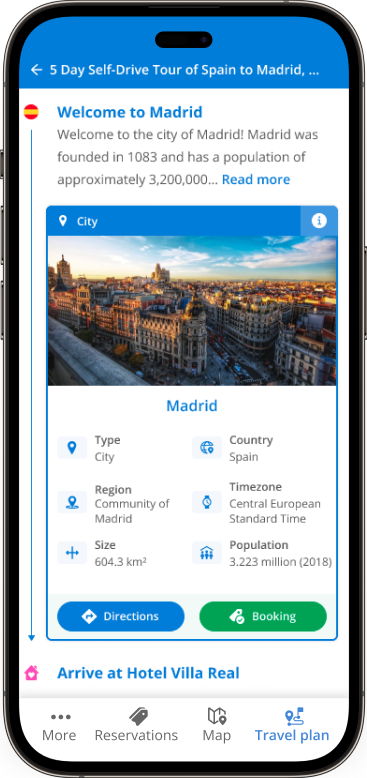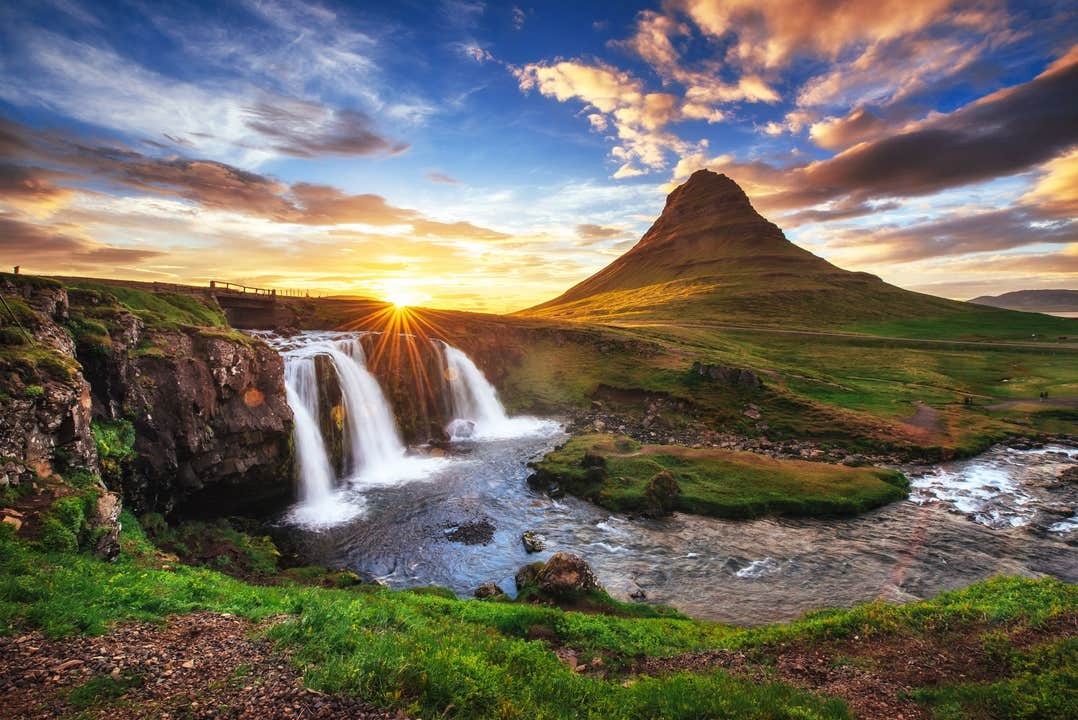
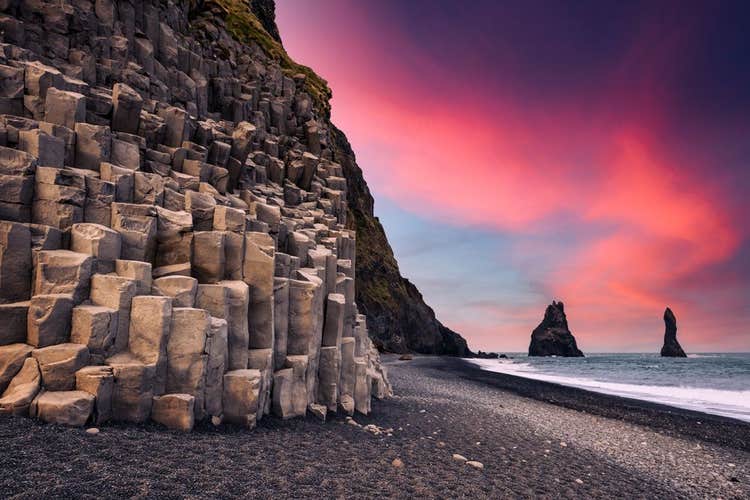
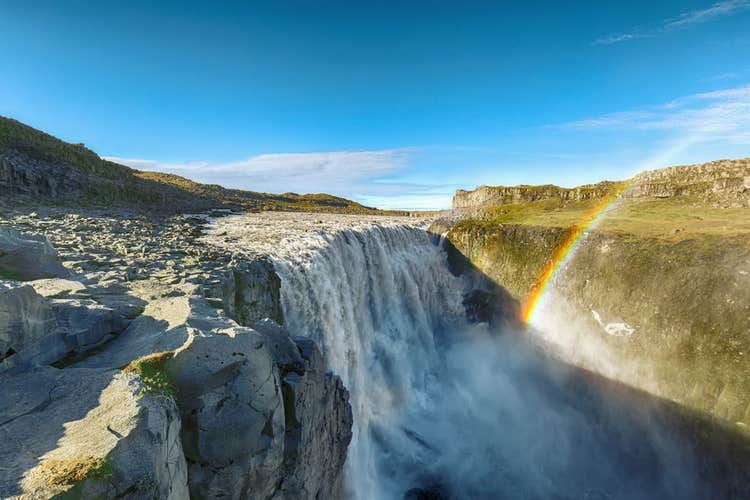
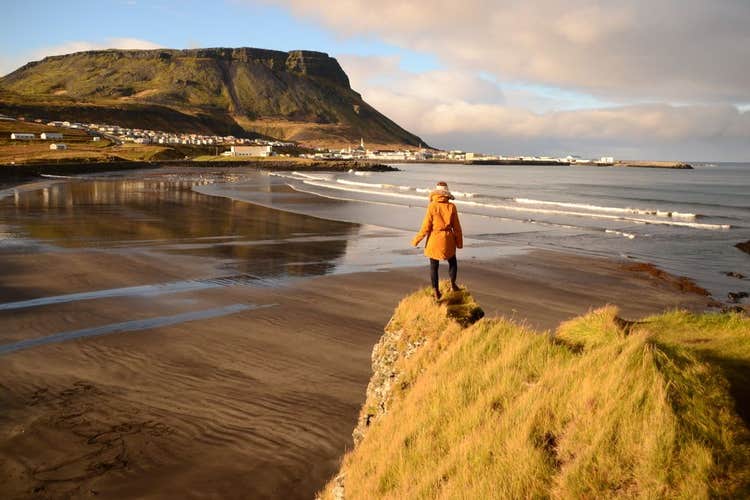
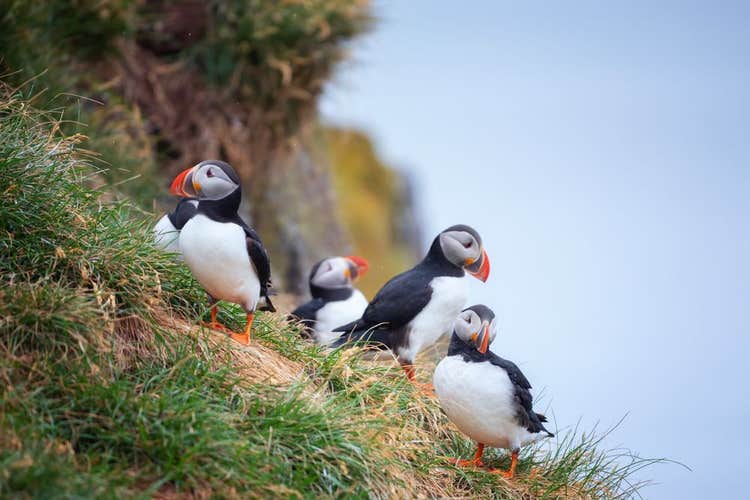
Iceland in July is a land of endless daylight and breathtaking landscapes. This guide covers everything you need to know—from what to expect and what to pack to the best activities and hidden gems.
Iceland, shaped by fire and ice, is one of the most geologically active places on Earth. July brings long daylight hours and mild weather, though sudden shifts can happen. From glacier hikes to whale watching, tours and experiences in Iceland offer endless adventure. Plus, direct flights to Iceland make getting here easy.
There’s so much more to discover, from wildlife encounters to breathtaking coastlines. Whether you're planning a quick getaway or a longer stay, keep reading to make the most of your summer trip. You might just find the perfect Iceland travel packages while you're at it.
Weather in Iceland in July
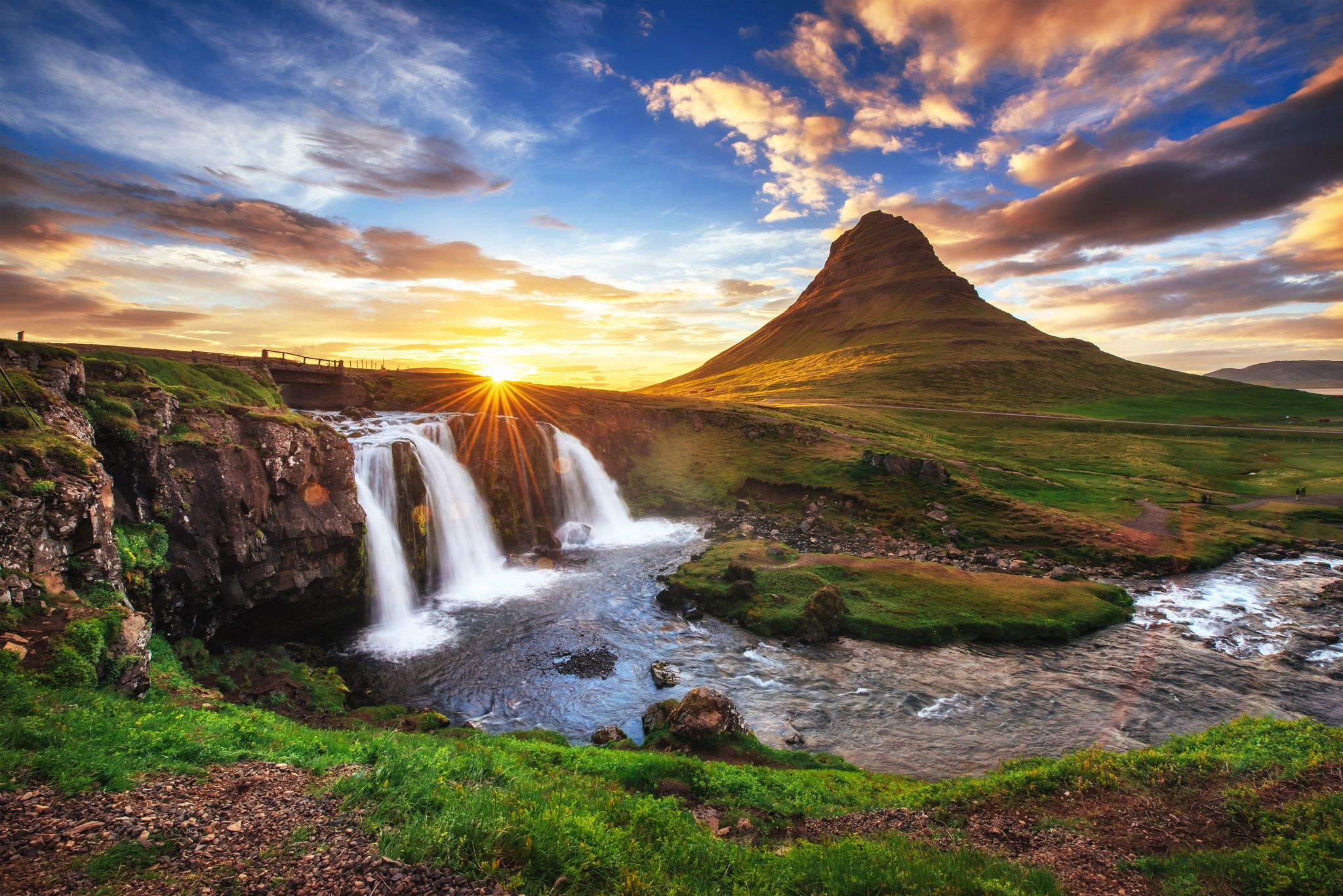
Iceland in July is a curious mix of summer warmth and unpredictable twists. Temperatures hover around 50 F to 60 F (10 C to 15 C), but the weather can change in an instant. One moment, it's sunny, the next, you're caught in a drizzle. The midnight sun means almost 24 hours of daylight, perfect for squeezing in extra sightseeing. For up-to-date conditions, check Iceland’s local weather service before heading out.
South Iceland in July
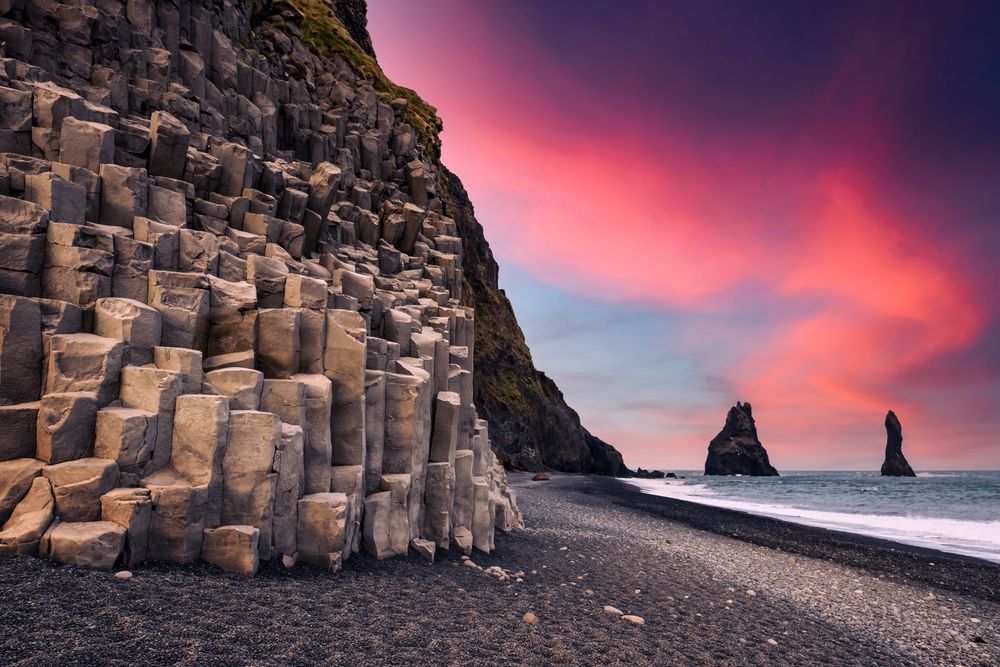
The most visited part of the country is also the wettest. Rain showers are frequent, but so are breathtaking sights. Expect milder temperatures and strong coastal winds while exploring waterfalls, black sand beaches, and glaciers. Highlights include the Golden Circle, Reynisfjara Beach, and Jokulsarlon Glacier Lagoon.
North Iceland in July
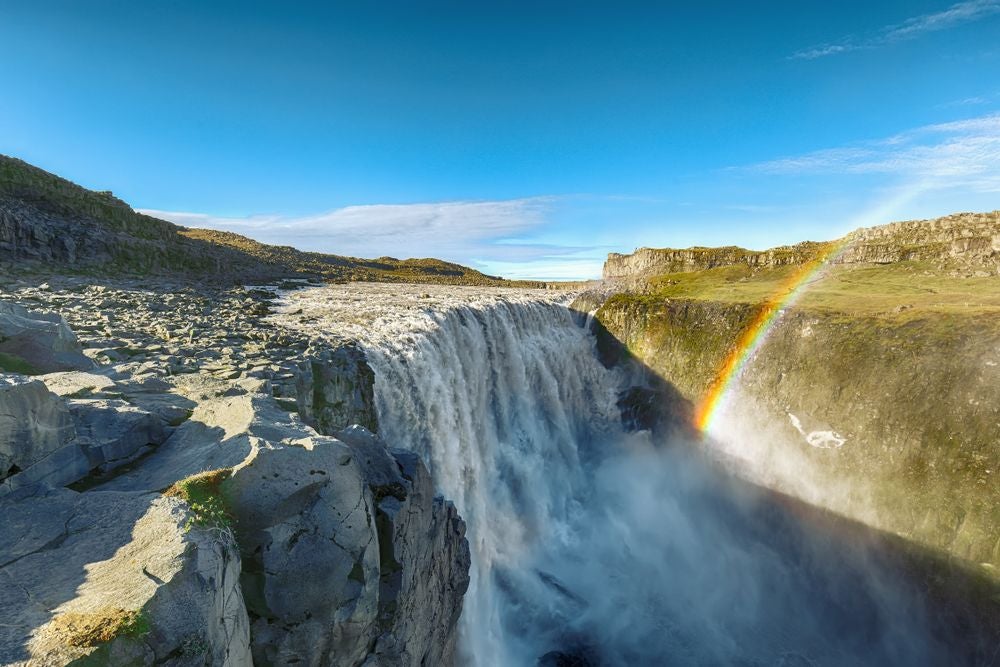
Cooler and drier than the south, this region sees more sunshine and clearer skies. Even in summer, the Arctic chill lingers. Akureyri, the so-called "capital of the north," enjoys pleasant weather, while areas near Lake Myvatn and Dettifoss offer striking landscapes with fewer tourists.
West Iceland (Including Westfjords) in July
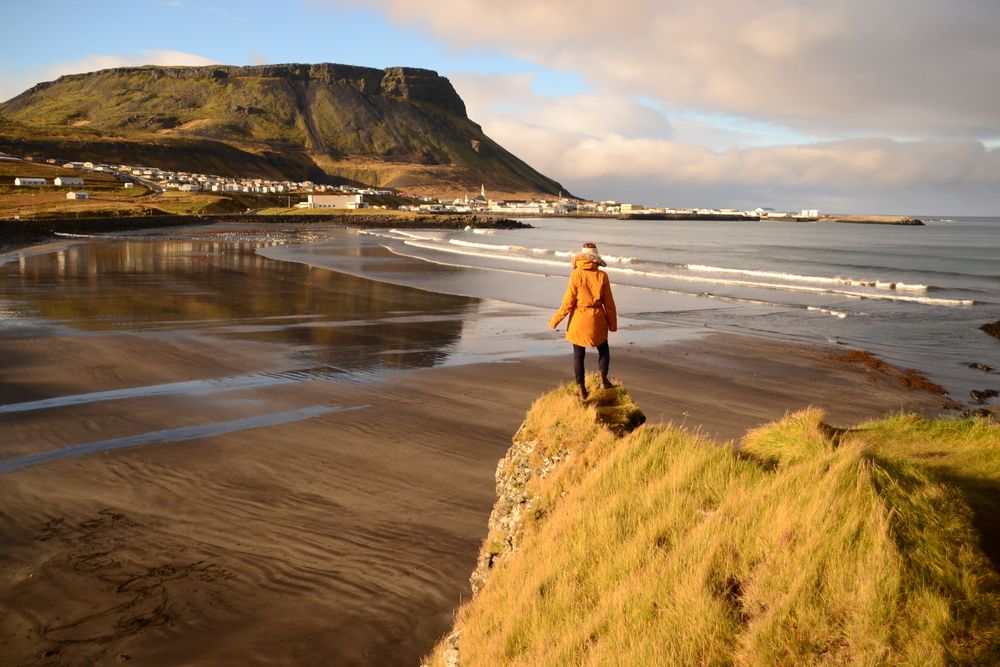
Unpredictable is the best way to describe it—strong winds, sudden fog, and occasional sunshine. Temperatures stay cool, and the weather can shift fast, especially in the Westfjords. Snaefellsnes Peninsula, Dynjandi waterfall day excursion, and Isafjordur are the main attractions, offering rugged beauty in every direction.
East Iceland in July

Slightly warmer and drier than the north, with long summer days that can feel almost Mediterranean—until the wind kicks in. Seydisfjordur, Hengifoss, and the puffin-filled cliffs of Borgarfjordur Eystri are top stops in this scenic and less-traveled region.
Central Icelandic Highlands in July
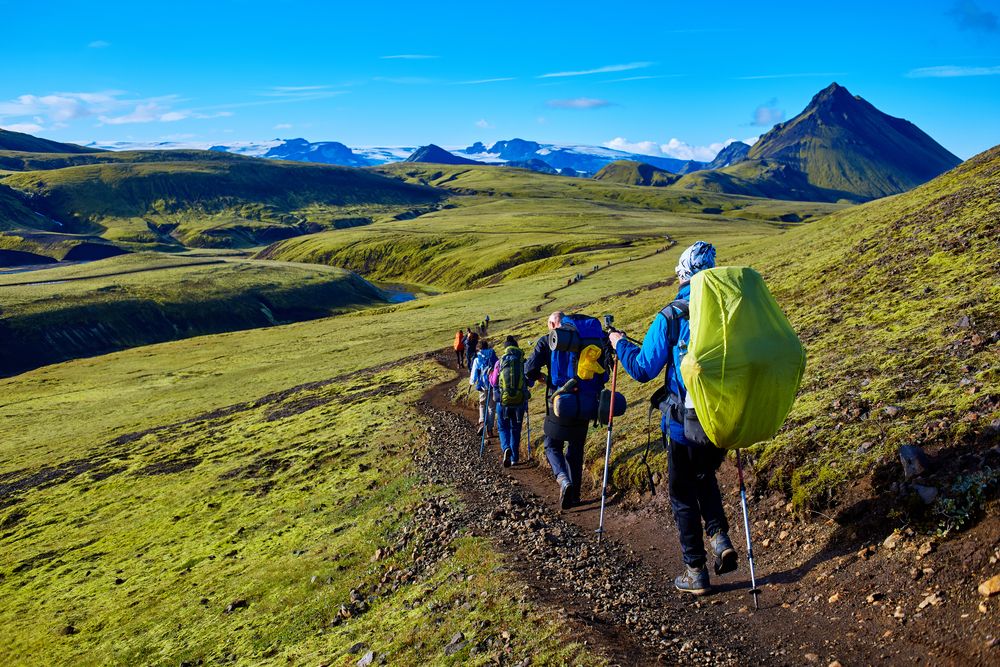
Expect the most extreme conditions. Snow lingers in some areas, and temperatures can dip close to freezing, even in July. The rugged terrain of Landmannalaugar and Kerlingarfjoll is accessible only in summer, offering otherworldly landscapes, steaming hot springs, and challenging hiking trails.
Best Places To Visit in Iceland in July
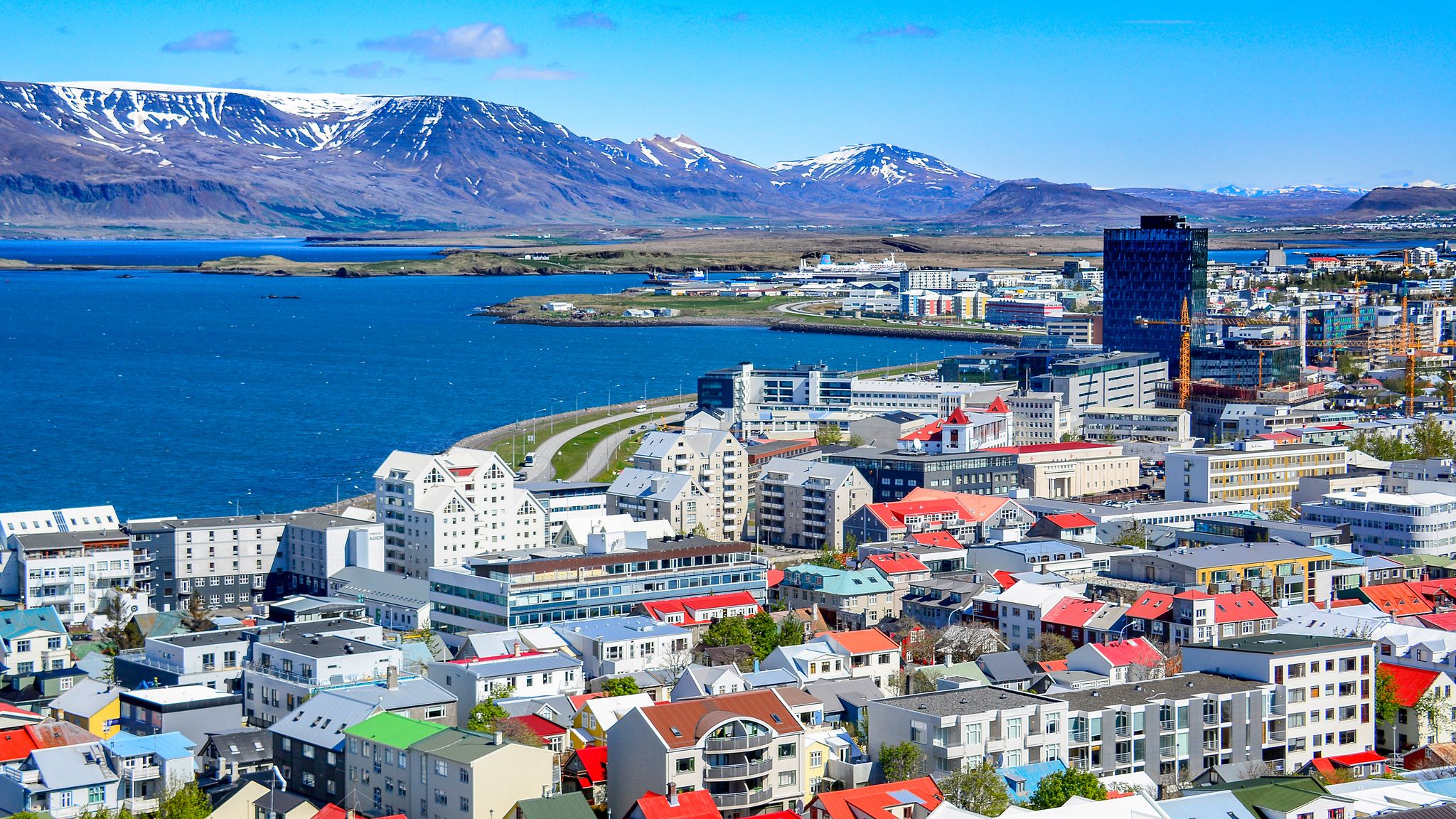
Iceland in July offers a unique opportunity to explore its stunning landscapes and rich cultural sites during summer. With nearly 24 hours of daylight, there’s plenty of time to visit the country’s most remarkable places. The mild weather makes it ideal for outdoor activities like hiking, exploring glaciers, and soaking in natural hot springs. Read below to discover the best places to visit, ensuring you make the most of your summer adventure.
Reykjavik in July
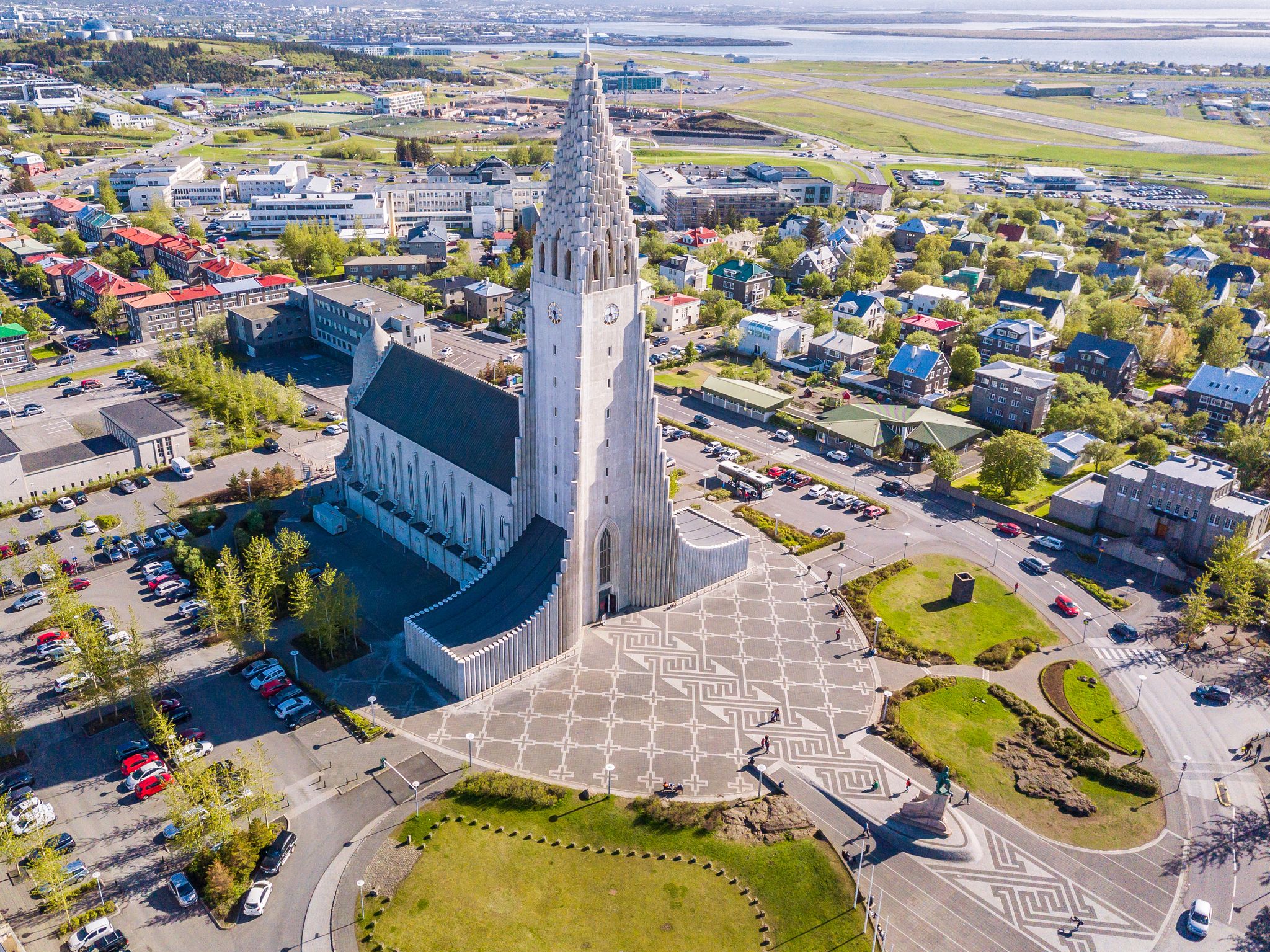
Reykjavik, Iceland’s capital, is a lively city that blends modern amenities with natural attractions. Getting there is easy, with many options for direct flights to Reykjavik from major cities worldwide.
Once you arrive, you’ll find many accommodations in Reykjavik to suit your needs, from well-appointed hotels to charming guesthouses. If you plan to explore beyond the city, renting a car is a wise choice, allowing you to see more of Iceland at your own pace.
While in Reykjavik, visit landmarks like the Sun Voyager, a beautiful sculpture along the waterfront. Also, the Hallgrimskirkja, the city’s famous church, has stunning views from the top. These sites offer a glimpse into the city’s unique character and history.
To make your visit smoother, booking Reykjavik tours and tickets ahead of time is a good idea, ensuring you don’t miss out on popular attractions. Whether walking through the city or taking day trips, Reykjavik is an excellent base for your Icelandic adventure.
Husavik In July
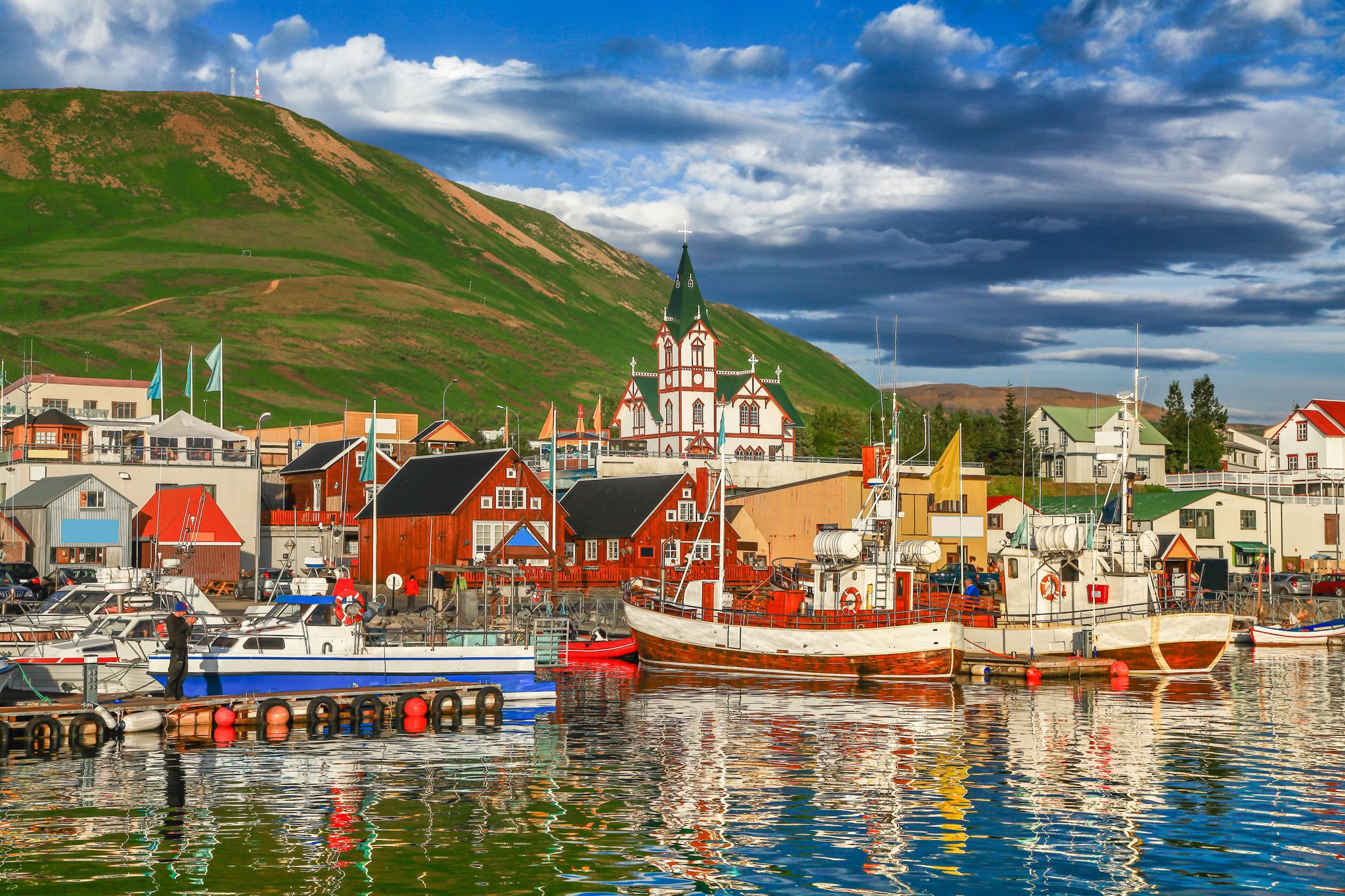
Husavik, a small town on Iceland's northern coast, is often called the whale-watching capital of Europe. Husavik offers a range of accommodations, from quaint guesthouses to more modern hotels, ensuring a comfortable stay for visitors.
Renting a car in Husavik is a practical option, allowing you to explore the beautiful surrounding areas at your own pace. It makes the most of your time in this picturesque region. The drive to and from Husavik also offers stunning views of the Icelandic landscape, making the journey as enjoyable as the destination.
While in Husavik, a visit to the Husavik Whale Museum is a must. The museum provides fascinating insights into the marine life. It thrives in the nearby waters and offers an educational complement to the popular whale-watching tours in the area.
The town’s connection to the sea is in its culture, and the museum beautifully highlights this relationship. Whether you're there for the whales or the rich local history, Husavik is a charming destination that offers a unique perspective on Iceland's coastal life.
Akureyri in July

Akureyri, often called the "Capital of North Iceland," is a charming town known for its scenic beauty and welcoming atmosphere. Surrounded by stunning fjords and mountains, it offers a perfect blend of nature, culture, and adventure for every traveler.
There are a lot of Akureyri and North Iceland accommodations to choose from, ranging from cozy guesthouses to comfortable hotels. Renting a car in Akureyri is recommended to explore the surrounding areas at your own pace. See the breathtaking Akureyri Art Museum, just an 11.18-mile (18 kilometers) drive away.
One of the highlights of visiting Akureyri is the opportunity to join a whale-watching tour from downtown. It is where you can see these majestic creatures up close in their natural habitat. The town is also rich in history, with the Akureyri Museum providing the region’s past and local culture.
Whether exploring the town’s museums or going to Godafoss waterfall, Akureyri offers a unique and memorable experience. It’s a perfect base for those looking to discover the beauty and history of northern Iceland.
Isafjordur in July

Isafjordur, a small town in the Westfjords of Iceland, offers a peaceful retreat surrounded by stunning natural beauty. Isafjordur provides a range of accommodations, making finding a place that suits your needs easy.
Renting a car in Isafjordur is a practical option, especially if you want to explore the rugged landscapes and nearby attractions at your own pace. A highlight of your trip is joining shore excursions in Isafjordur that showcase the area's untouched natural beauty.
The Dynjandi waterfall and farm visit tour is a must-do for anyone visiting Isafjordur. This tour takes you to one of the most impressive waterfalls in the region, where you can enjoy the sight and sound of cascading water in a serene setting.
The farm visit adds a cultural touch, giving you a glimpse into the traditional way of life in the Westfjords. With its stunning scenery and rich local culture, Isafjordur offers travelers a unique and memorable experience exploring Iceland’s less-traveled paths.
Egilsstadir in July
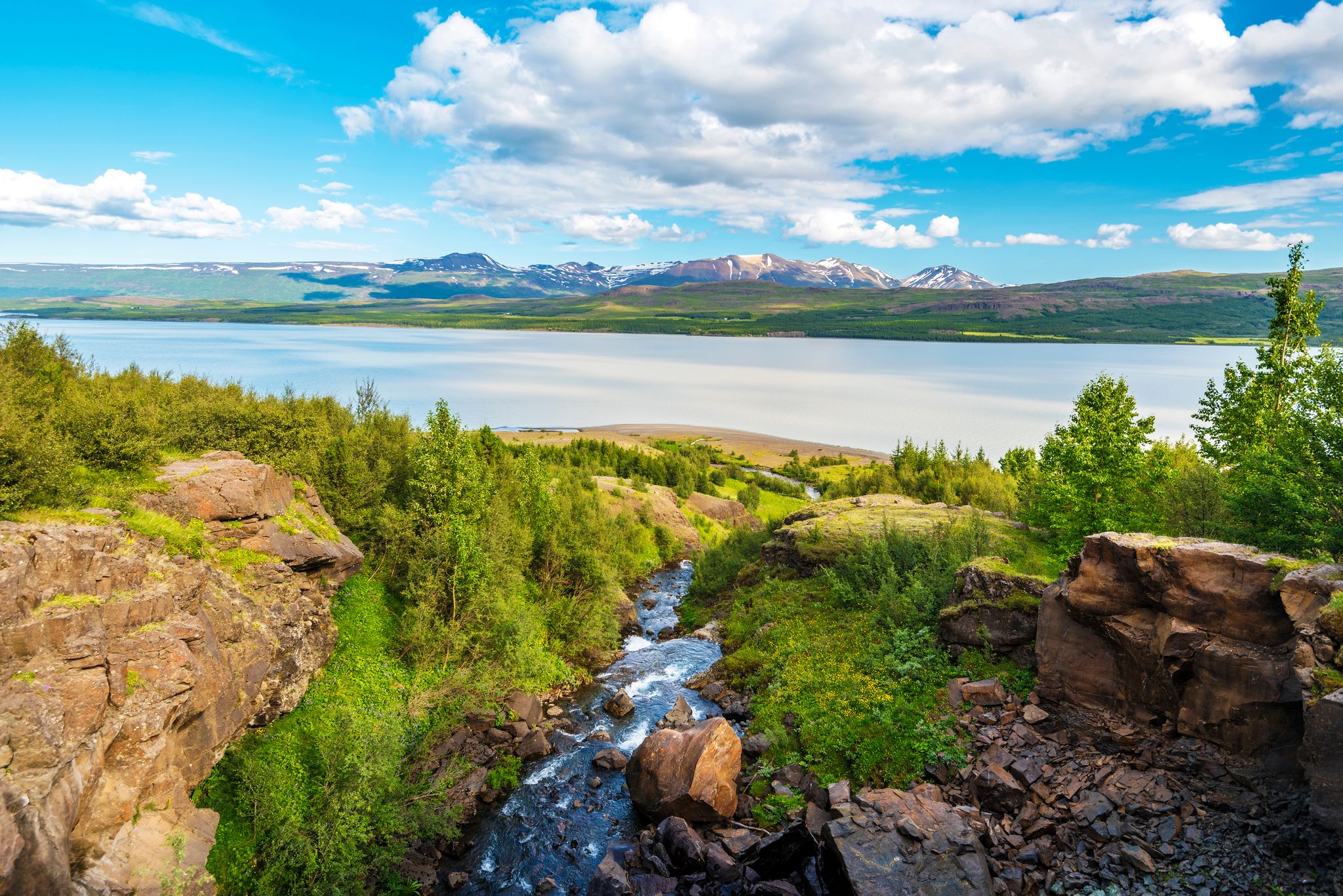
Egilsstadir, located in East Iceland, is a great starting point for exploring the region’s diverse landscapes and natural attractions. Accommodations in Egilsstadir range from comfortable hotels to inviting guesthouses that serve as a cozy base for your adventures.
With car rentals, you can easily access nearby sites, including stunning waterfalls. If you’re traveling from other parts of Iceland, domestic flights to Egilsstadir are convenient. It allows you to maximize your time exploring the area.
The surrounding region of Egilsstadir is known for its scenic beauty and quiet charm. It is a perfect destination for those seeking to escape the crowded tourist spots. Renting a car in Egilsstadir allows you to explore independently, whether heading to the coast or venturing into the highlands.
Svartifoss is well worth the journey for its dramatic setting and picturesque views. With its natural beauty and easy accessibility, Egilsstadir is an excellent choice for travelers looking to experience the quieter side of Iceland.
Hofn in July
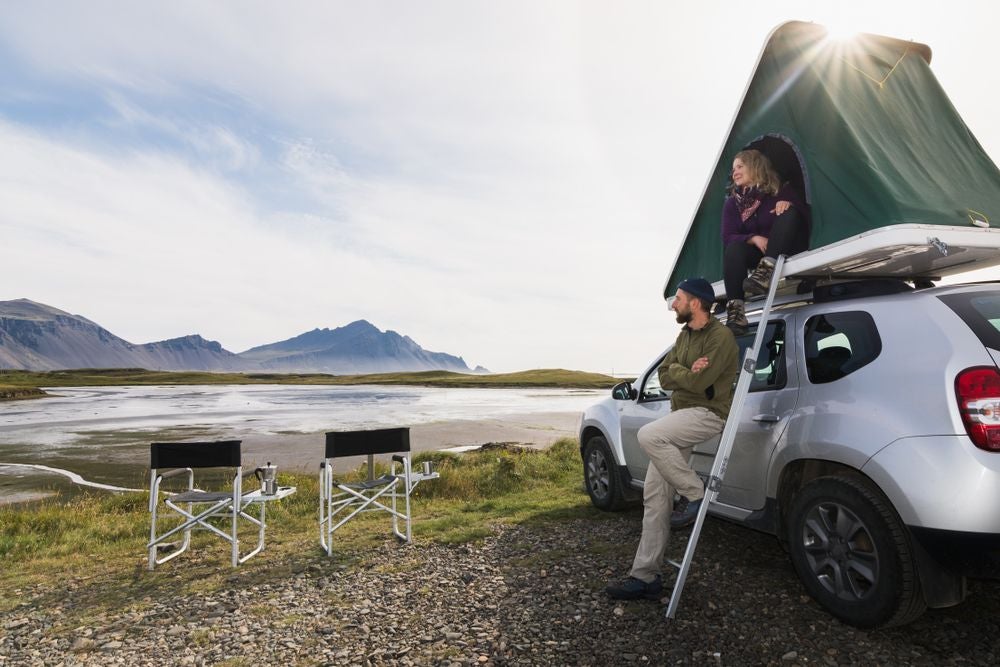
Hofn, a small town in southeastern Iceland, is a gateway to some of the country’s most stunning natural attractions. It's great for exploring the nearby Jokulsarlon glacier lagoon, where you can see icebergs drifting in the water.
If you’re looking for adventure, consider booking a zip line and glacier half-day adventure from Hofn. It combines the thrill of soaring through the air with the beauty of Iceland’s icy landscapes.
Things To See in Iceland in July
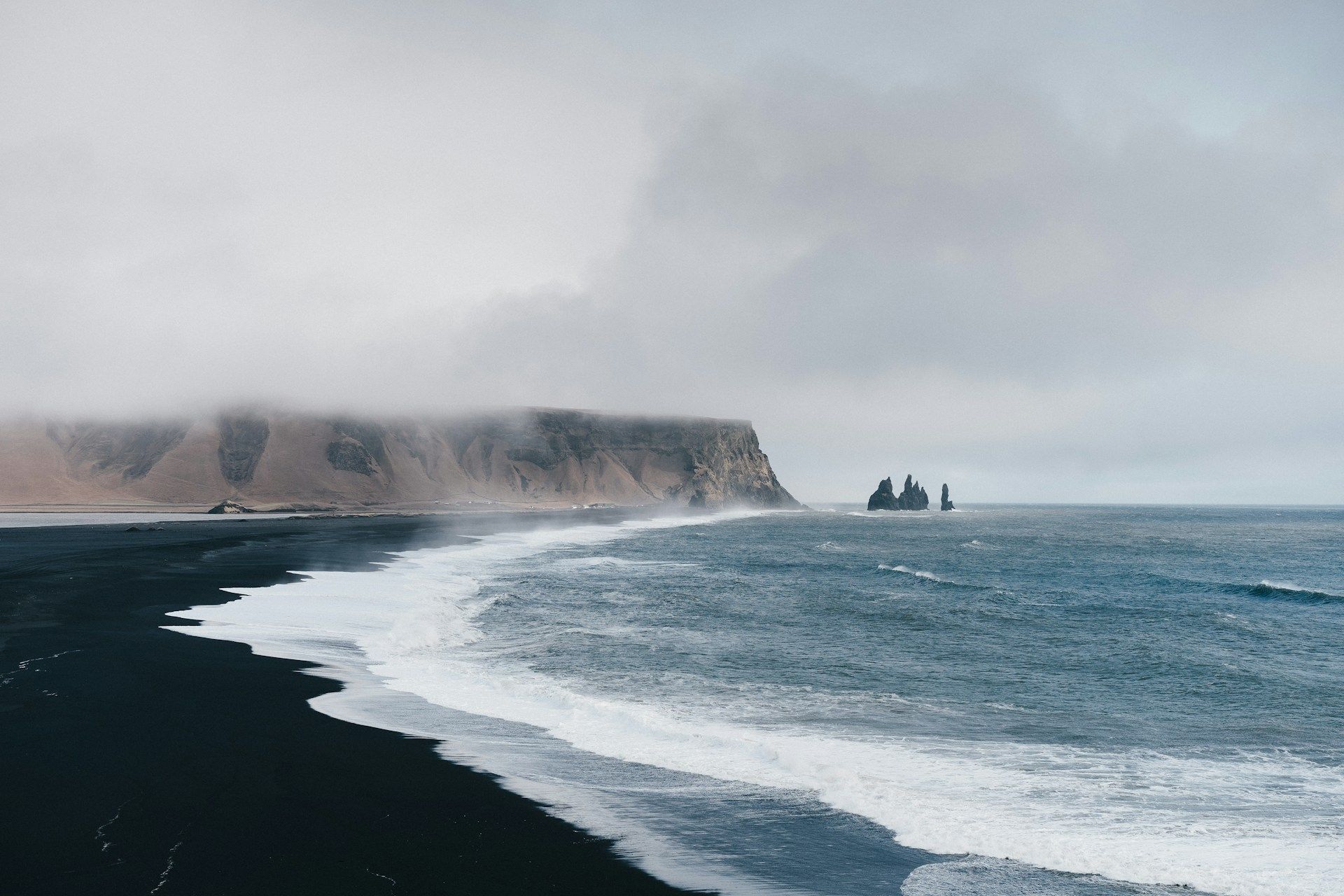
Exploring Iceland’s iconic landmarks is an unforgettable experience, especially when the Iceland weather in July is mild and inviting. With longer days and relatively stable temperatures, it’s the perfect time to discover some of the country’s stunning natural wonders. Here are some attractions for your must-visit list.
Studlagil Canyon
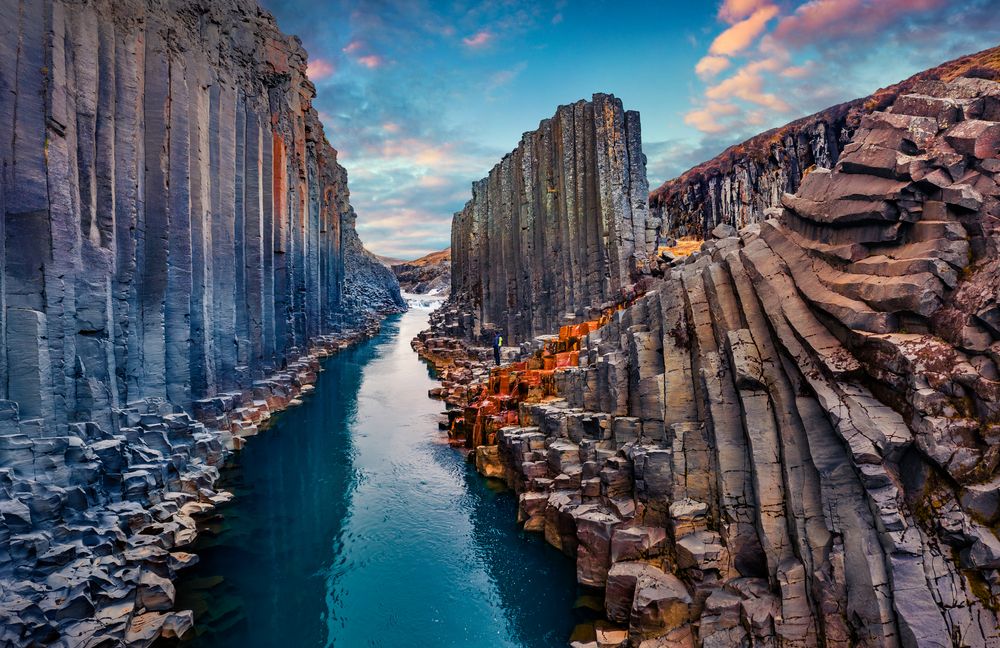
One of the most striking places to visit is Studlagil Canyon, known for its towering basalt columns and blue waters. The main access to the canyon requires a hike, but the effort is well worth it once you arrive. The unique geological formations make it a photographer’s paradise, and the peaceful surroundings offer a sense of tranquility.
Gunnuhver Hot Springs
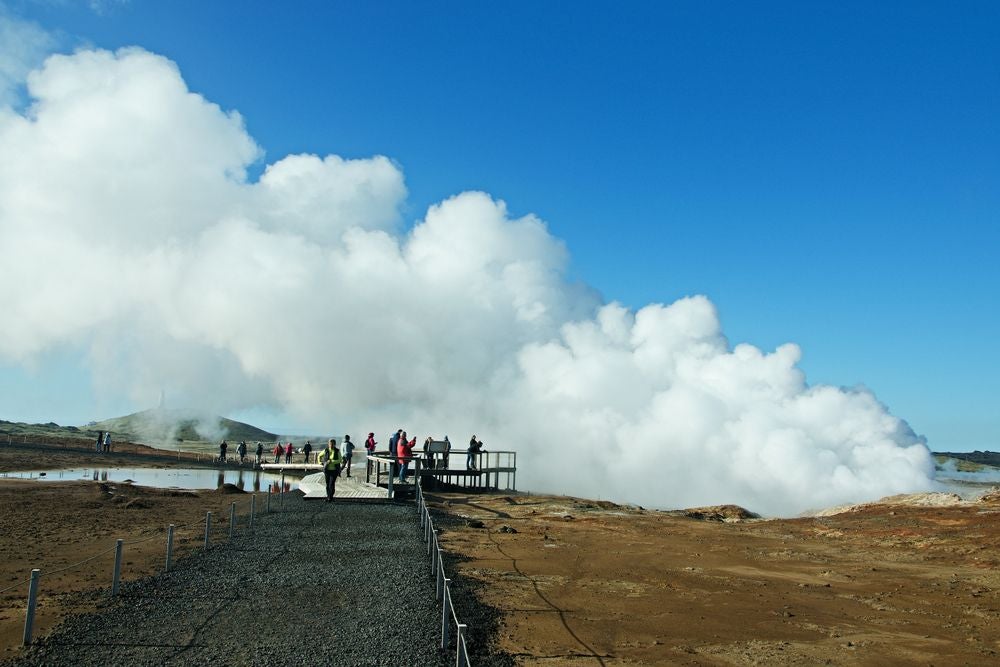
Gunnuhver Hot Springs, located on the Reykjanes Peninsula, is another incredible spot to add to your itinerary. This geothermal area is famous for its steaming vents and bubbling mud pools, creating an almost otherworldly landscape. The hot springs are named after a ghost from local folklore, adding a touch of mystery to the experience.
Glanni Waterfall
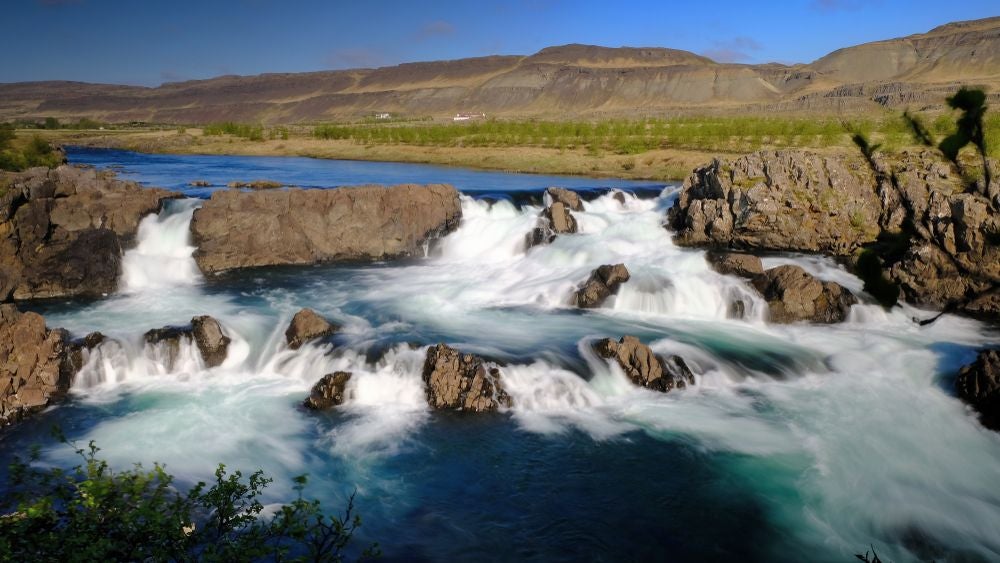
For those who appreciate waterfalls, Glanni Waterfall offers a picturesque stop on your journey through Iceland. The waterfall is in a lush green valley, smaller than some of Iceland’s other famous falls, but its charm lies in its serene setting. The surrounding area is perfect for a quiet walk or a picnic, allowing you to enjoy the peaceful atmosphere.
Drekkingarhylur
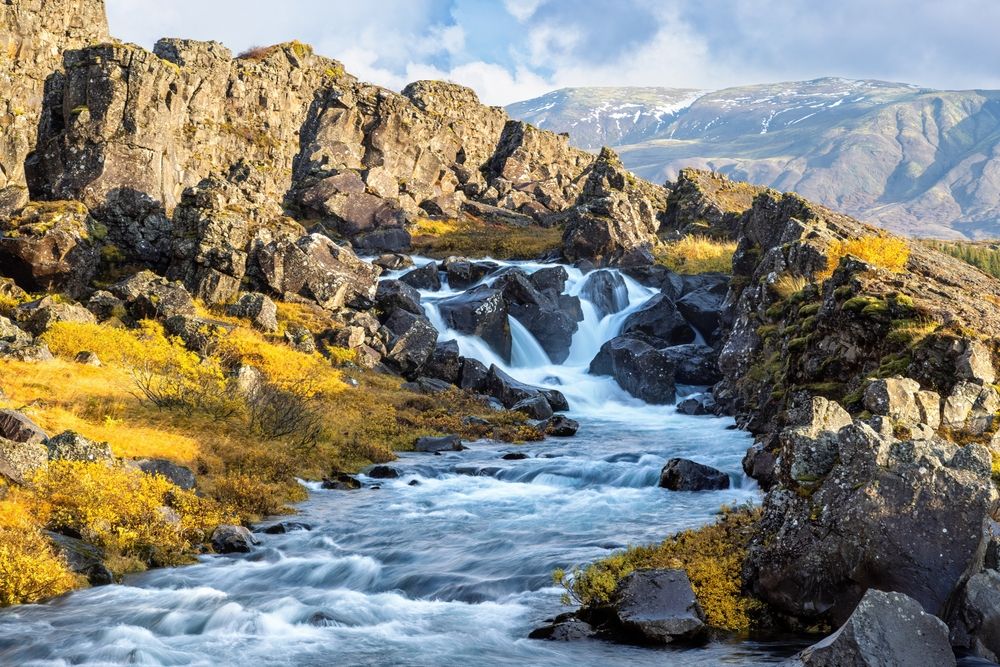
Drekkingarhylur, also known as the Drowning Pool, is a historical site with a sad past. Located in Thingvellir National Park, this deep pool was once a place of execution. It is for women accused of crimes in the 16th and 17th centuries. While the site is beautiful, with crystal-clear waters and surrounding cliffs, it reminds visitors of Iceland's darker history.
Things To Do in Iceland in July
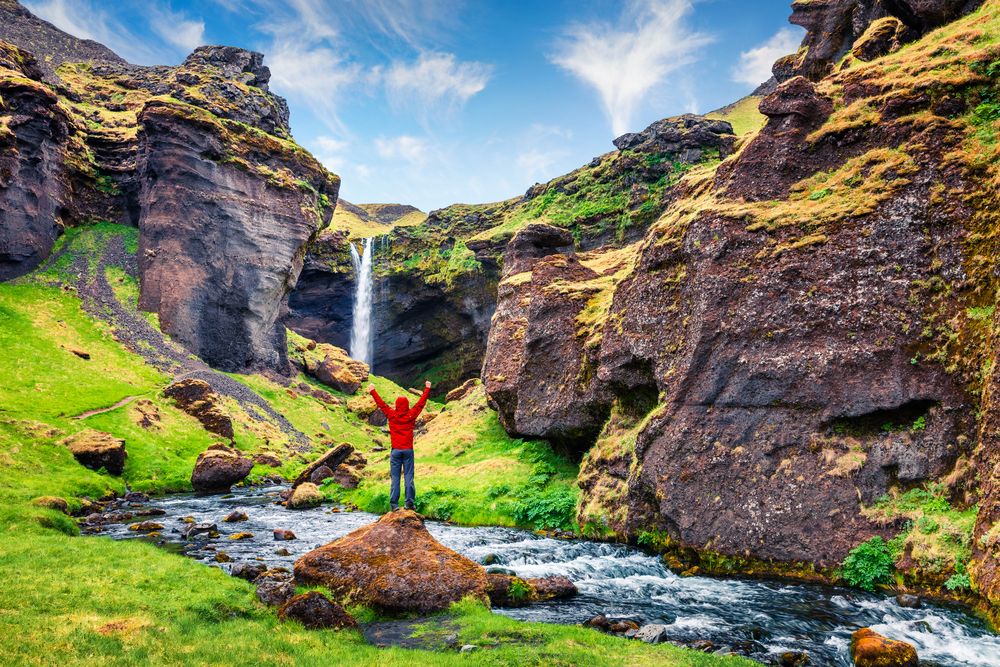
July in Iceland offers many activities that showcase the country’s stunning natural beauty and unique cultural experiences. It’s the perfect time to explore everything from glaciers and waterfalls to exciting adventures on land and water.
Go Snorkeling at Silfra
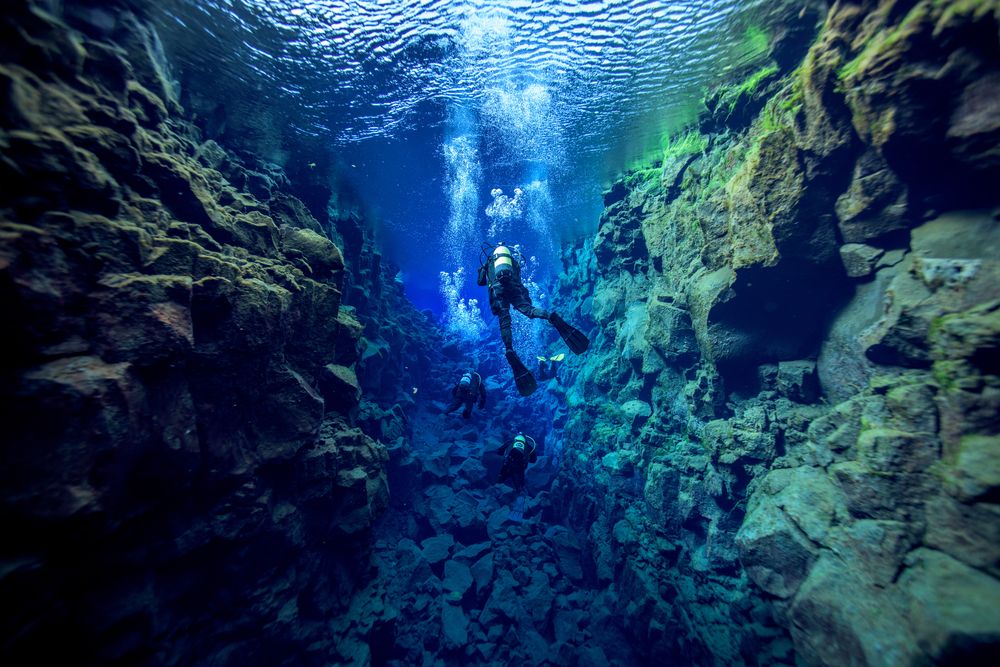
One of the most unique experiences in Iceland is snorkeling between continents at Silfra in Thingvellir National Park. It lets you swim between the North American and Eurasian tectonic plates in crystal-clear waters. The visibility here is fantastic, giving you a clear view of the underwater landscape, including fascinating rock formations.
Explore Icelandic Nature On a South Iceland Day Tour
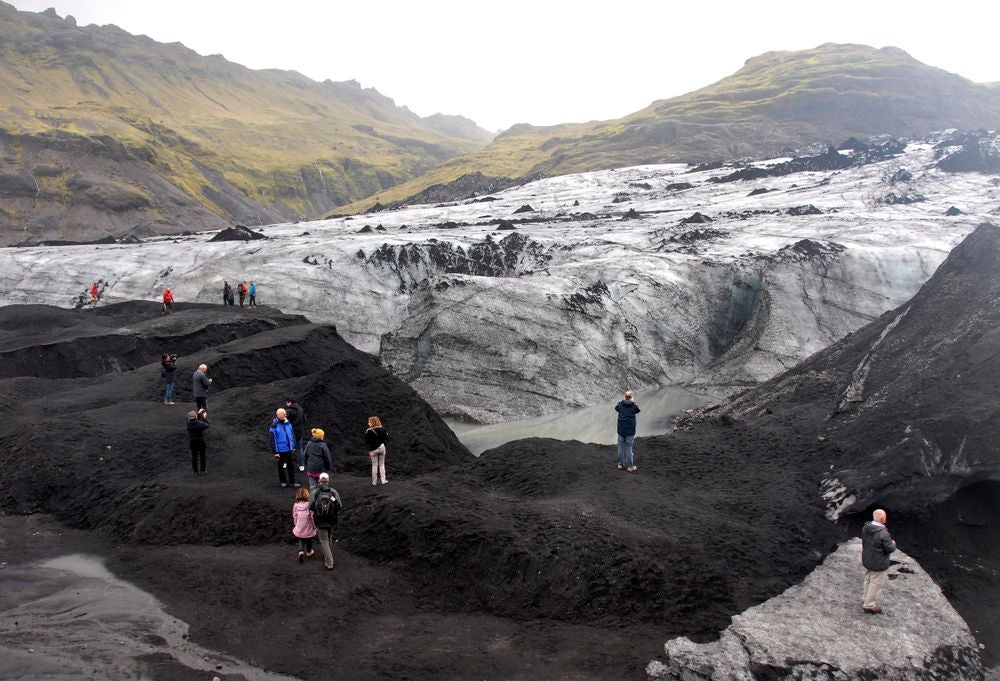
A day tour of South Iceland offers an incredible experience as it explores mesmerizing glaciers, majestic waterfalls, and the famous black sand beaches. It’s a fantastic way to take in the region’s dramatic landscapes. It includes stops at iconic sites like Seljalandsfoss and Skogafoss waterfalls and the Reynisfjara black sand beach.
The contrast between the glaciers and the dark beaches creates stunning photo opportunities and unforgettable memories. It’s an ideal day trip for those wanting to see some of Iceland’s most famous natural wonders.
Try The Local Icelandic Beer Experience
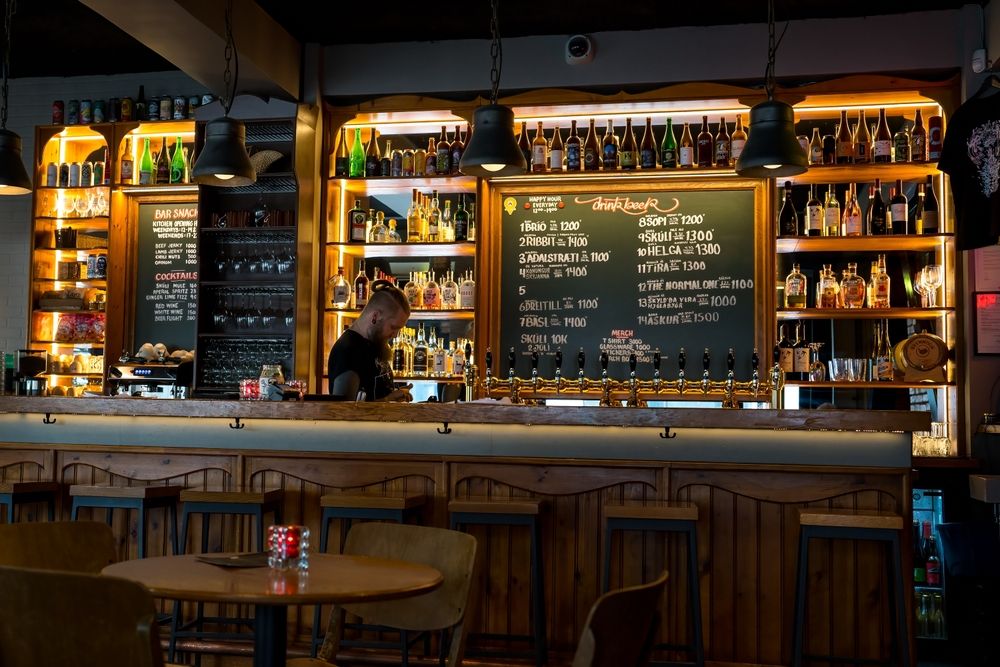
To taste Iceland’s local culture, a beer and booze tour in Reykjavik is a fun and informative way to spend an afternoon or evening. This tour often includes visits to local breweries and distilleries, where you can sample various Icelandic beers and spirits.
Along the way, you’ll learn about the country’s brewing traditions and their evolution. It’s a relaxed way to enjoy local flavors while gaining insight into Iceland’s culinary scene.
Embark On An Exhilarating ATV and Helicopter Adventure
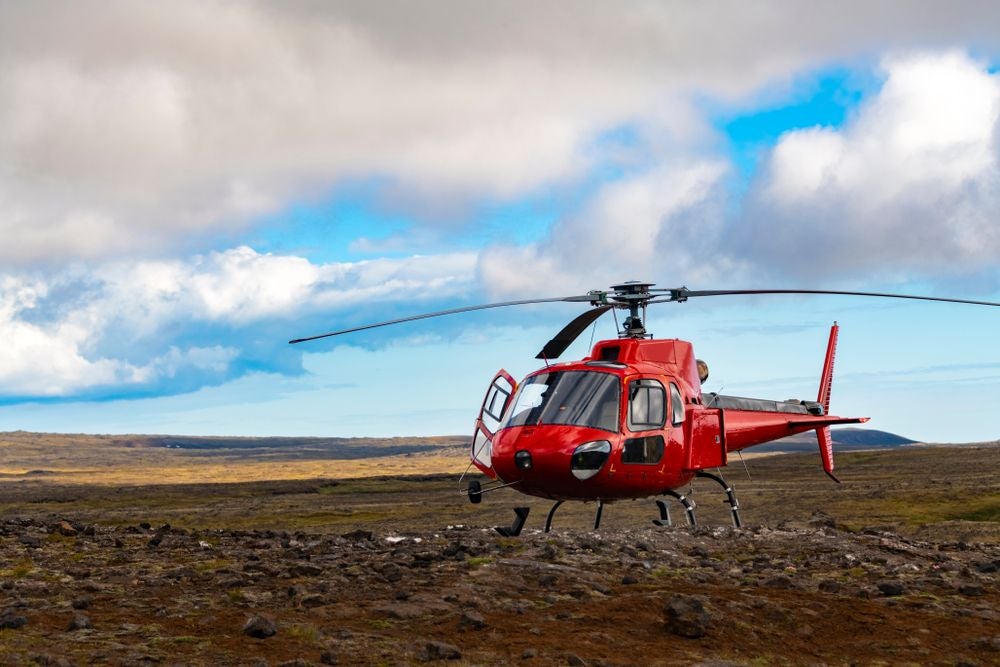
For those seeking a thrilling experience, this ATV and helicopter tour from Reykjavik offers an exhilarating way to see Iceland. The adventure begins with an adrenaline-pumping ATV ride through rugged terrain, followed by a helicopter flight that reveals breathtaking views of Iceland’s diverse landscapes. From mountains and glaciers to volcanic craters, this tour covers it all.
Driving Around Iceland in July
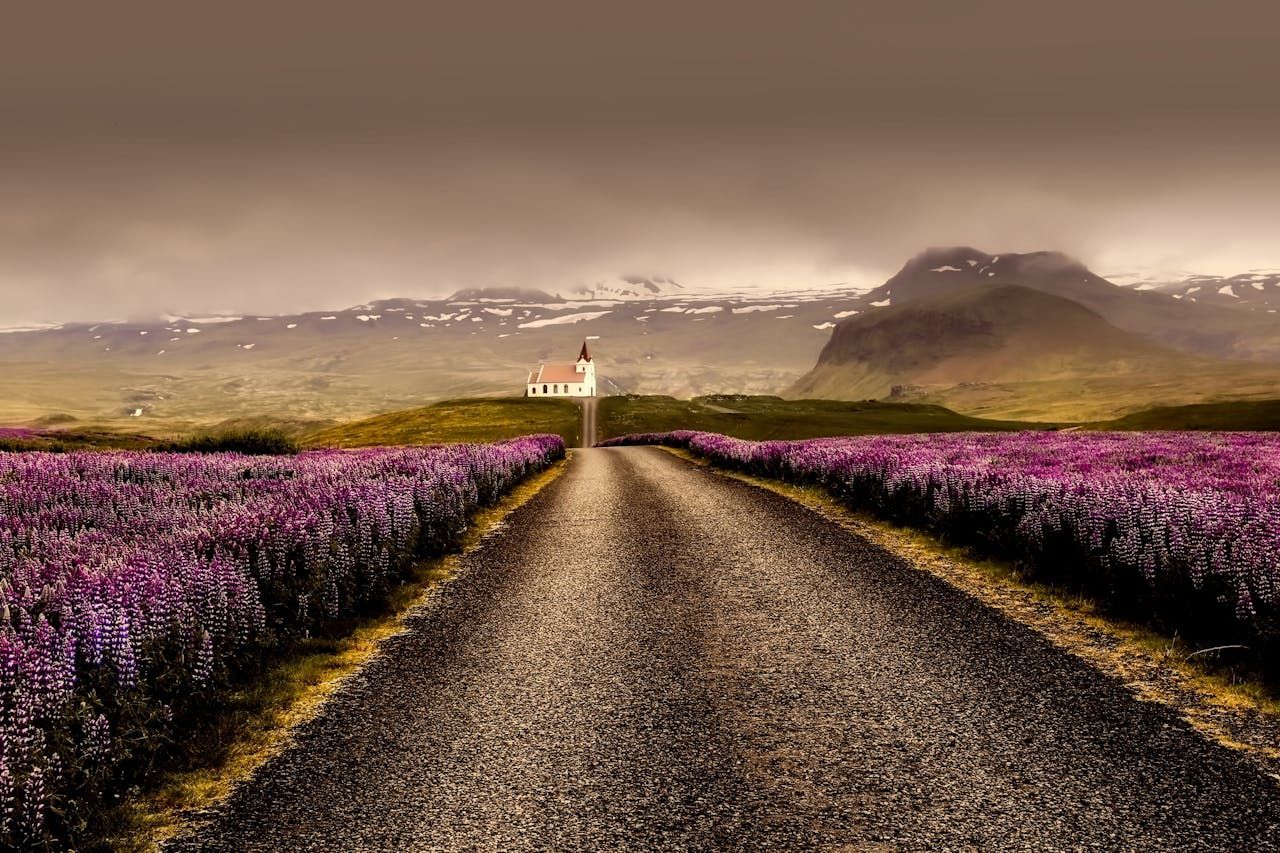
Driving around July in Iceland is a fantastic way to explore the country at your own pace. The temperature in Iceland in July is mild, typically ranging from 52 F to 66 F (11 C to 19 C). The long daylight hours also mean you can pack more daily, whether heading to famous tourist spots. It’s the perfect time to hit the road and see everything this beautiful country offers.
Driving Around South Iceland in July
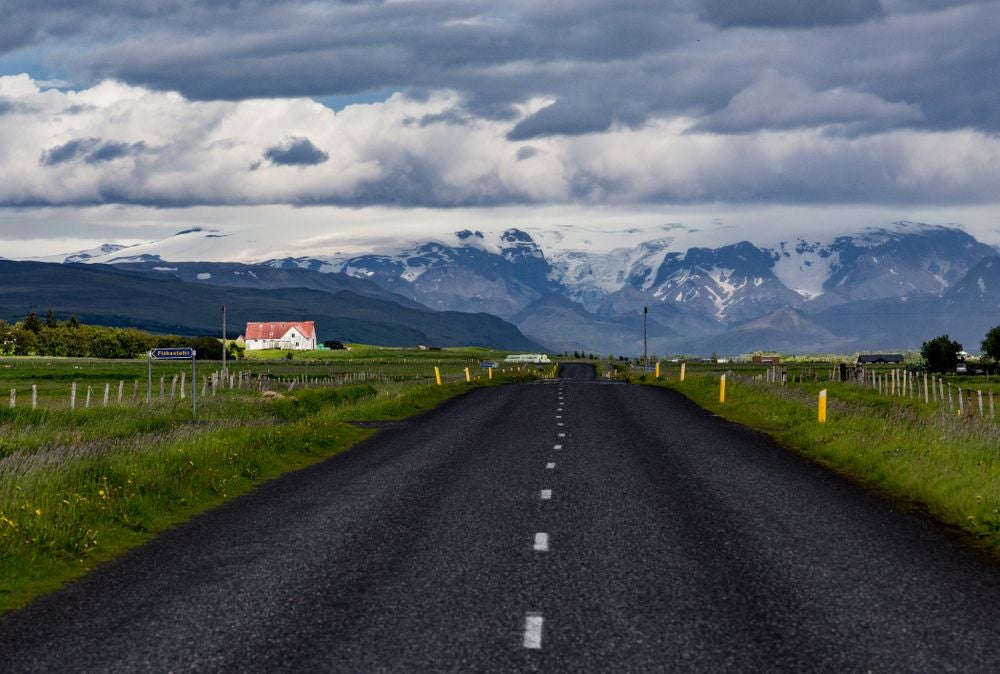
One of the most popular routes is the south coast, where a full-day South Coast minibus tour from Reykjavik offers a guided experience of some of Iceland’s most stunning natural attractions.
However, if you prefer the flexibility of driving, this route is easily accessible by car. You can stop at famous landmarks like Seljalandsfoss and Skogafoss waterfalls or explore the black sand beaches at your own pace.
Explore the Golden Circle in July
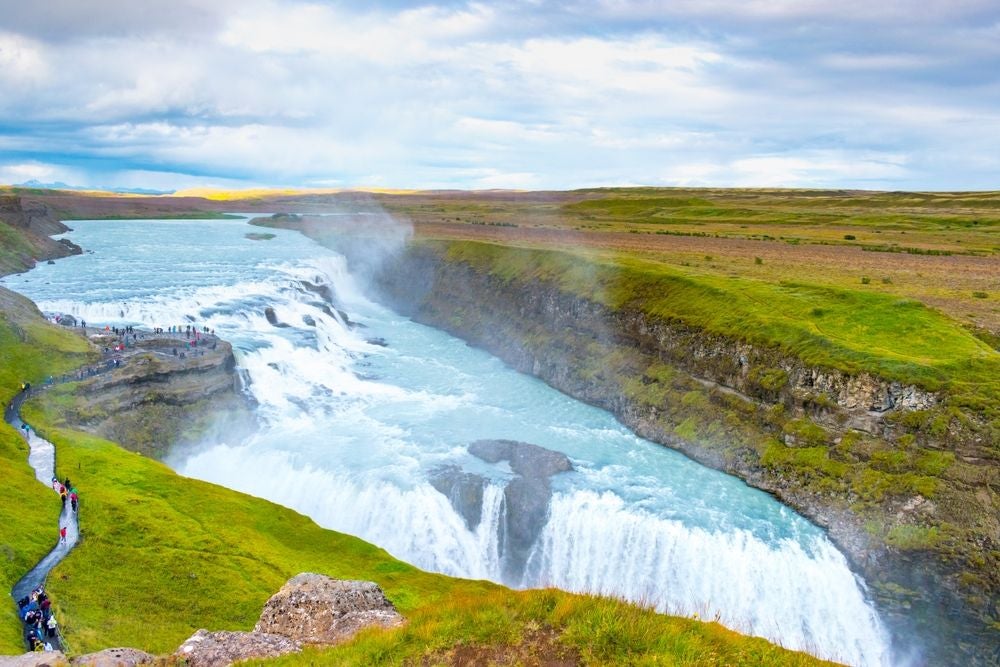
For those interested in exploring more of Iceland’s interior, a Golden Circle tour in a jeep is another great option. This route takes you to some of the country’s most iconic sites, including Thingvellir National Park, Geysir, and Gullfoss waterfall. Driving a jeep gives you the added benefit of accessing more rugged areas.
Drive Around the Country With A Self-Exploration Tour
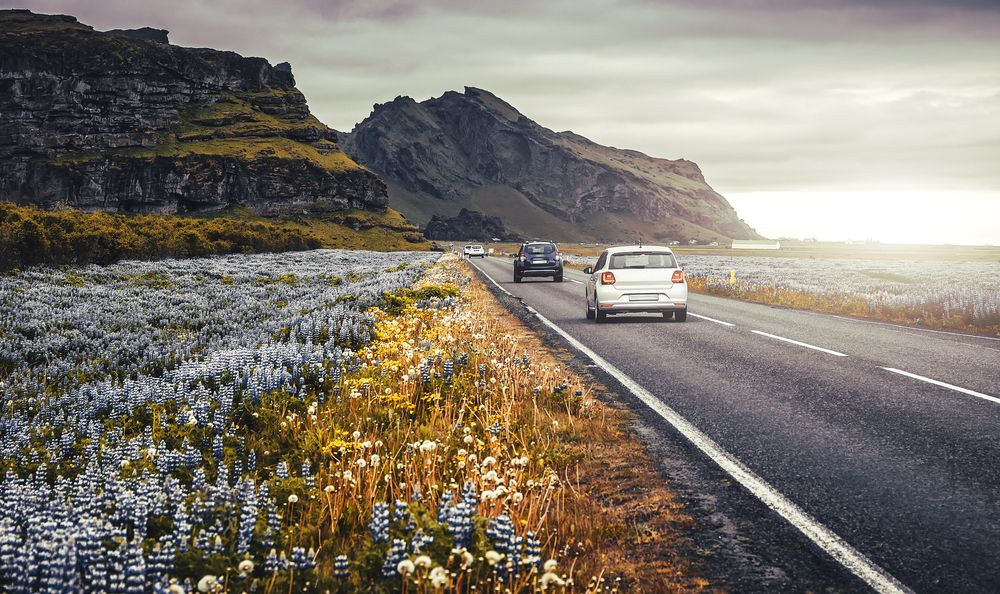
If you prefer a more self-guided experience, consider using a private audio guide of the island for your 8-day self-exploration tour. It allows you to drive around Iceland with the added benefit of expert commentary without needing a live guide. You can synch the audio guide to your car’s sound system, providing information on the landmarks and points of interest.
What To Wear or Pack In Iceland in July
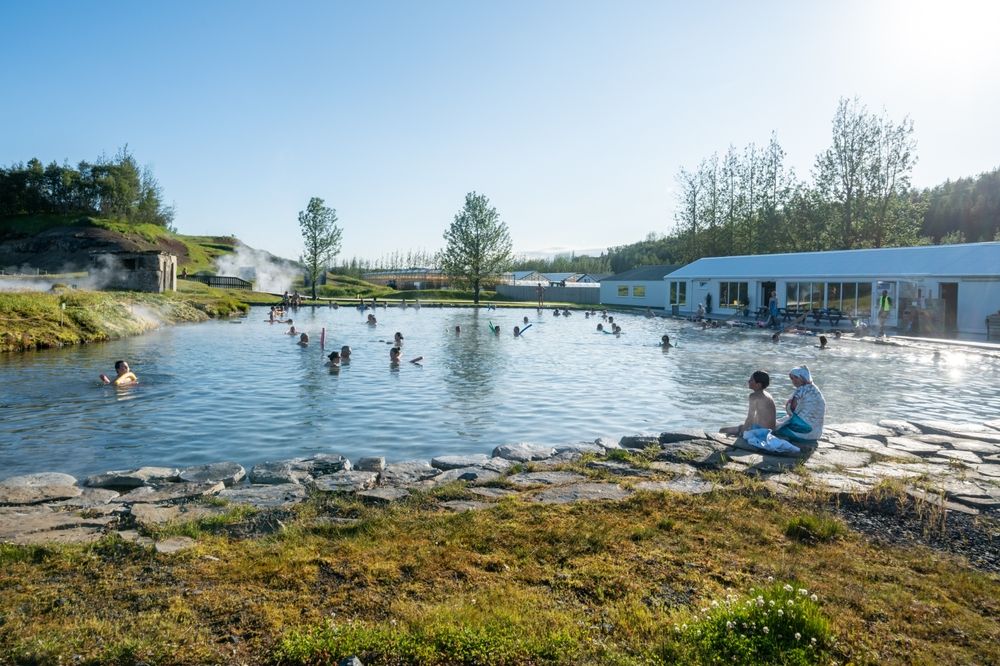
Packing for Iceland in July requires preparation, as the weather can be unpredictable, and you'll likely engage in various activities. You must be ready for cool mornings and warmer afternoons, whether on an ice-caving and glacier hike in Skaftafell or enjoying a walking tour.
Having the suitable clothing can make a difference. It’s also wise to be prepared for occasional rain, as the weather can shift quickly, even in July. Here are some essentials to pack for your trip:
- Waterproof jacket: Essential for staying dry during unexpected showers or windy conditions.
- Base layers: Opt for moisture-wicking materials to stay comfortable during outdoor activities.
- Warm hat and gloves: Even in summer, the wind can be chilly, especially near glaciers or on a cruise around Disko Bay.
- Comfortable hiking boots: Sturdy and waterproof, ideal for glacier hikes and long walks.
- Thermal socks: These keep your feet warm and dry, particularly during colder mornings or on icy terrain.
- Daypack: Useful for carrying essentials during day trips or walking tours, with space for water, snacks, and extra layers.
- Sunglasses and sunscreen: The sun can be intense, especially during long daylight hours, so protect your eyes and skin.
- Casual clothing: Comfortable attire for relaxing evenings or exploring the local dining scene in Reykjavik.
With these items in your suitcase, you’ll be well-prepared to enjoy all of Iceland's offers. The climate in Iceland in July is generally mild but ensures you’re ready for anything the weather might bring. Packing will help you fully embrace the diverse experiences that Iceland has in store for you.
Enjoy Your Visit to Iceland in July
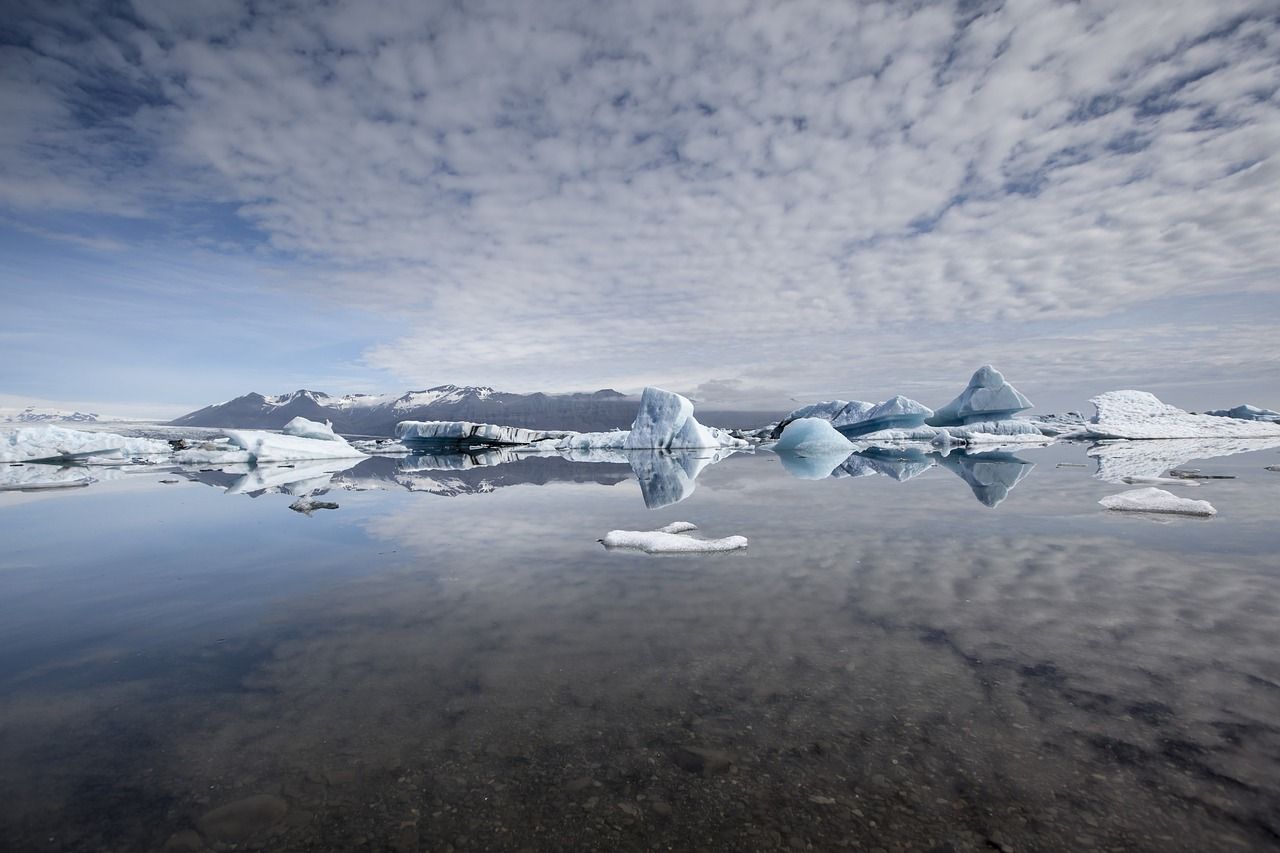
July is an ideal time to visit Iceland. Mild weather and nearly endless daylight allow you to fully experience the country’s stunning landscapes and rich culture.
Try exploring the iconic Golden Circle or driving along the scenic South Coast; there’s no shortage of things to see and do. From outdoor adventures to cultural tours, Iceland in July provides an unforgettable travel experience that caters to all travelers.
As you plan your visit to Iceland, consider the variety of activities and sights available to ensure you make the most of your time. With so many breathtaking natural wonders and cultural sites to explore, Iceland is a destination that will leave you with lasting memories. July is the perfect month to see everything this incredible country offers.
If you want to see the northern lights during your trip to Iceland, learn more about what it is like to visit Iceland in October.
Frequently Asked Questions
Is it a good time to go to Iceland in July?
Yes, July is a great time to go to Iceland, especially if you're considering an 11-day road trip from Reykjavik to Vik, Hofn, Seydisfjordur, Akureyri, and Olafsvik. The weather is mild, and the long daylight hours allow you to maximize your time exploring each destination. The roads are generally in good condition, making traveling between these stunning locations easier. July’s weather and accessibility make it one of the best months for a road trip in Iceland.
Can you see the northern lights in Iceland in July?
No, the northern lights are not visible in Iceland in July. The long daylight hours and short nights mean the sky isn’t dark enough for the auroras to be visible. The best time to see the northern lights is from late September to early April when the nights are longer and darker. July offers other amazing experiences, but northern lights viewing isn’t one of them.
Does it get completely dark in Iceland in July?
No, it doesn’t get completely dark in Iceland in July. The country experiences the midnight sun, with only a few hours of twilight at night when the sun dips below the horizon. This extended overall daylight is perfect for sightseeing and outdoor activities, allowing you to make the most of your time. However, it can take some adjustment if you’re used to a more typical day-night cycle.
Is it windy in Iceland in July?
July tends to be one of the calmer months in Iceland, but it can still be windy, especially along the coast and in open areas. The wind isn’t usually as strong as in winter, but it’s still wise to pack a windproof jacket. The weather can change quickly, so being prepared for varying conditions is good. The wind shouldn’t be a significant issue for your July visit.
Is Iceland too crowded in July?
July is one of Iceland's peak tourist months, so some popular spots can be crowded. However, you can avoid the busiest times by carefully planning and visiting places early in the day or later in the evening. While the main attractions see more visitors, there are still plenty of quieter areas to explore. It’s a busy time, but with the right approach, it doesn’t have to feel overcrowded.
Is Iceland expensive in July?
Iceland can be expensive in July, the peak travel season. Prices for accommodations, car rentals, and activities are higher during this time. However, with some planning, you can still find options for top vacation packages in Iceland customizable to your budget. Budgeting accordingly and looking for deals to keep costs manageable is important.
